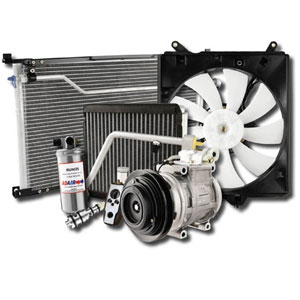
Resources
- Home
- About Air Cooling Systems
- Air Conditioner Pre Cooling System
- Air Cooling System
- Air Cooling System Design
- Air Cooling System In Automobiles
- Air Cooling System Reviews
- Air Cooling Systems FAQs
- Air Cooling Systems For Homes
- Air Cooling Systems For Offices
- Air In Cooling System Symptoms
- Car air Cooling System
- Car Air Cooling System
- Compressed Air Cooling System
- Cooling Air System
- Engine Air Cooling System
- Forced Air Cooling System
- Forced Air Heating And Cooling System
- Gas Turbine Inlet Air Cooling System
- How Do Air Cooling Systems Work
- Simple Air Cooling System
- Types Of Air Cooling Systems
- Underground Air Cooling System
- Where To Buy An Air Cooling System
Car Air Cooling System
The car air cooling system resolves one of the major challenges in gasoline engines. It is an integral part of the “power plant” and is needed to ensure that the gasoline engine is able to convert most of the chemical energy into mechanical energy. Heat is both a necessity and a problem in gasoline powered engines. Excess heat impedes the normal engine operations and can lead to serious damage to essential engine parts. On the other hand, heat is a critical element for the optimal performance of gasoline engines.
Importance of Car Air Cooling System
In general, the car air cooling system is needed to prevent the car engine from overheating. Most car owners are aware of this basic function of car air cooling system. The car air cooling system prevents engine overheat by controlling heat build-up and transferring the same from the engine block and into the external environment. However, we must also take note of the fact that the car air cooling system is also need to immediately “heat up” the engine at start-up.
To increase the operating lifespan of the engine, it is important that it immediately attains the ideal operating temperature level at engine start-up. Thus it is more appropriate to state that the car air cooling system is responsible for maintaining the temperature of the engine.
The Basics of Car Air Cooling System
The basic operation of the car air cooling system can be categorized into 2 main events:
- Rise in the temperature at engine start-up
- Maintenance of required operating temperature while the engine is running
Instantaneous and continuous combustion of fuel occurs while the engine is running. This process of combustion increases the temperature within the engine, and part of the chemical energy is converted into waste heat. While the combustion process expels part of the generated heat through the car’s exhaust system, a considerable amount of heat is absorbed by the engine block. The optimal operating temperature of the engine is at 93 degrees, and the engine might overheat if it exceeds this temperature level for a long period of time.
When operating at the desired temperature level, the engine combustion chamber gets heated to a point that the fuel is instantly vaporized. This process results to better fuel combustion. During complete combustion, the viscosity of the lubricating oil becomes less, and this minimizes the loss of power and reduces wear and tear of essential engine parts.
There are two types of cooling systems. These are the:
- Liquid Cooling System
- Air Cooling System
As the name implies, liquid cooling systems use coolant to absorb waste heat from the engine block and move the same from the engine and into the external environment. The “heated” coolant or fluid is fed into the radiator or heat exchanger where it is cooled as air blows through the fins found on its surface.
On the other hand, car air cooling system is used in old cars and in a few modern car models. Instead of fluid or coolant that circulates within the cooling system, engine temperature is maintained with the use of aluminum fins that are attached to the engine block. Excess heat is absorbed by the fins through the process of conduction and the same is expelled into the air by a powerful fan.
